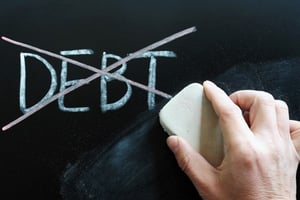 One of the most common questions that I get from clients after we’ve gone through the process of preparing a bankruptcy case for filing at Kain & Scott is “what else should I know?”
One of the most common questions that I get from clients after we’ve gone through the process of preparing a bankruptcy case for filing at Kain & Scott is “what else should I know?”
It’s a perfectly understandable question - our clients have been with us at every step of the process of preparing their bankruptcy petition, schedules and statements. They’ve spoken with us at the initial stage, where we put together a “game plan” for addressing their financial problems. They’ve been with us as our assistants verify the facts of their case to make sure the information that is on the petition and schedules filed with the court is complete and accurate. And they’ve sat in with the lawyer on their case to make sure, as the lawyer and clients review the petition and schedules together, that the lawyer is satisfied that there are no legal issues that will create complications in the client receiving a bankruptcy discharge. We process a lot of information, together. But many clients want to be sure that they’ve been fully informed as to what will happen when their case is filed and what they can expect after filing and after they receive their discharge.
The question is simple and straightforward. The answer, however, can be complicated. This week I’ll look at some of the consequences of filing a bankruptcy case that may not be obvious, or commonly understood by clients.
Online banking and automatic payments may be discontinued
This is by far, the most common unexpected consequence of filing bankruptcy for our clients. Almost all of our clients have debts that they intend to continue to pay after their case is filed. Most common are secured debts - such as car payments and mortgage payments. Clients who have simply paid these loans online or through the use of automatic monthly withdrawals from their bank account might be surprised when they notice that the payment that was “supposed” to come out didn’t, or that when they logged onto their account there was a notice from their bank that online services had been discontinued.
What is an automatic stay and what does it mean?
Why is this? The bankruptcy code’s automatic stay is powerful - it is a court order, issued when a bankruptcy case is filed, that applies to all of a bankruptcy debtor’s creditors. The automatic stay prohibits any action by a creditor to collect a debt - even a debt that the bankruptcy debtor intends to pay. An automatic withdrawal to pay a car loan or home mortgage is seen by some (but not all) creditors as a violation of the automatic stay - so some lenders will stop the automatic withdrawal when the creditor receives the bankruptcy notice from the court.
The automatic payment situation seems pretty straightforward - but why is online (and for that matter phone) payment disabled? Again, this goes back to the automatic stay. Lenders that offer online payments will have a statement online of then next payment amount and the due date. This is seen, by the lenders, as an “act” to collect a debt. As such, the lenders can’t be telling their customers how much is owed and when the payment is due without getting on the wrong side of the bankruptcy automatic stay. So those services are disabled, often to the frustration of the customers/bankruptcy debtors.
What’s the solution to this complication of filing bankruptcy? It’s usually as simple as the attorney for the debtor sending a written authorization to the bank or lending institution authorizing the restoration of automatic payments and online and phone payment options. Occasionally, banks or lenders will send their own authorizations to the lawyer for the bankruptcy debtor for the debtor’s and lawyers signatures. That does the same thing - it re-starts the convenience of automatic and online services. For the rare circumstances in which the bank or other lender simply won’t re-start these services, the bankruptcy debtor will have to make their payment the “old-fashioned way” - by sending checks for payment in the mail. It’s frustrating for our clients when this happens, but if our clients are advised ahead of filing of the potential for this taking place, the client can usually take the appropriate steps to make sure that payments on mortgages and car loans stay current while the bankruptcy case is pending.
That’s the most common unexpected problem that our clients experience, but not the only one. Next week I’ll look at some other issues that come up occasionally after a bankruptcy case is filed.



